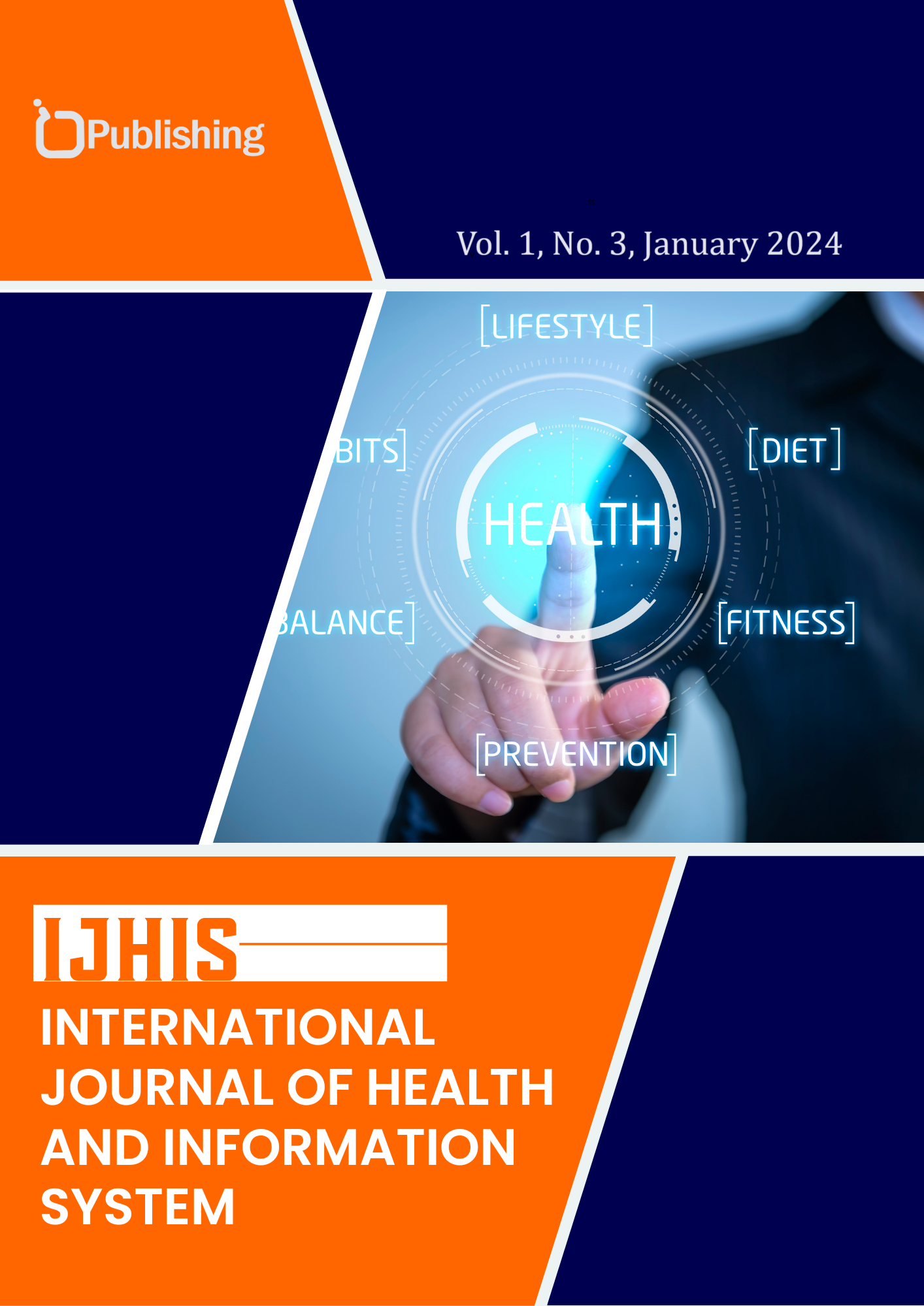Integrated Electronic Medical Record Design With Nutritional Screening System at NCC’s Teaching Factory
DOI:
https://doi.org/10.47134/ijhis.v1i3.28Keywords:
Databse, EMR’s NCC, WaterfallAbstract
One of Politeknik Negeri Jember's Teaching Factories (TEFA) that offers community nutrition services is the Nutrition Care Centre (NCC). The design of electronic medical records (EMRs) for continuous care patients, especially those with non-communicable diseases, is being studied in order to meet the ever-increasing needs of health care, assist patients who require continuous care, and improve the way that modern medical technology serves humans. The Waterfall framework concept is used in the research process, and an electronic medical record system is designed in accordance with the goals and the overall architecture of the system. Black-box testing and white-box testing are then conducted to evaluate the features, dependability, and stability of the designed electronic medical record system. Furthermore, when combined with other research findings, the design's viability is demonstrated. It is evident that the electronic medical record system created for the study's patients who require ongoing care is entirely workable. As electronic medical records continue to develop, there will be more opportunities to research and enhance this system, which will benefit patients and hospitals alike in the long run.
References
M. Anshari, “Redefining Electronic Health Records ( EHR ) and Electronic Medical Records ( EMR ) to Promote Patient Empowerment,” Int. J. Informatics Dev., vol. 8, no. 1, pp. 35–39, 2019, doi: https://doi.org/10.14421/ijid.2019.08106.
Kemenkes, “Peraturan Menteri Kesehatan RI No 24 tahun 2022 tentang Rekam Medis,” 2022.
D. R. A. Tiorentap, “Evaluasi Manfaat Penerapan Rekam Medis Elektronik di Negara Berkembang : Systematic Literature Review,” Indones. Heal. Inf. Manag. J., vol. 8, no. 2, pp. 69–79, 2020.
G. Deimazar, M. Kahouei, A. Zamani, and Z. Ganji, “Health information technology in ambulatory care in a developing country,” Electron. Physician, vol. 10, no. 2, pp. 6319–6326, 2018, doi: 10.19082/6319.
B. Dutta and H.-G. Hwang, “The Adoption of Electronic Medical Record by Physicians : A PRISMA-compliant Systematic Review,” Medicine (Baltimore)., vol. 99, no. 8, p. e19290, 2020, doi: 10.1097/md.0000000000019290.
C. E. Kight et al., “Consensus Recommendations for Optimizing Electronic Health Records for Nutrition Care,” J. Acad. Nutr. Diet., vol. 120, no. 7, pp. 1227–1237, 2020, doi: 10.1016/j.jand.2019.07.018.
S. Susetyowati, H. Hadi, A. H. Asdie, and M. Hakimi, “Implementation of Standardized Nutrition Care Process Algorithm Nutritional Screening-Based,” J. Gizi Klin. Indones., vol. 11, no. 1, pp. 20–30, 2014, doi: 10.22146/ijcn.18880.
W. I. Swan et al., “Nutrition Care Process (NCP) Update Part 2: Developing and Using the NCP Terminology to Demonstrate Efficacy of Nutrition Care and Related Outcomes,” J. Acad. Nutr. Diet., vol. 119, no. 5, pp. 840–855, 2019, doi: 10.1016/j.jand.2018.10.025.
Wijayanto and H. W. Subagio, “Perbandingan Skrining Gizi Kariadi (SGK) dengan Subjektive Global Assessment (SGA) pada Pasien Rawat Jalan Rumah Sakit Dr Kariadi (RSDK) Semarang,” J. Nutr. Heal., vol. 5, no. 1, pp. 45–49, 2017, doi: 10.14710/jnh.5.1.2017.45-49.
J. Abbott, L. Teleni, D. McKavanagh, J. Watson, A. L. McCarthy, and E. Isenring, “Patient-Generated Subjective Global Assessment Short Form (PG-SGA SF) is a Valid Screening Tool in Chemotherapy Outpatients,” Support. Care Cancer, vol. 24, no. 9, pp. 3883–3887, 2016, doi: 10.1007/s00520-016-3196-0.
A. Deharja, M. Yunus, and M. W. Santi, “Electronic Health Records Design in the Nutrition Care Center of Teaching Factory at Politeknik Negeri Jember, Indonesia,” Int. J. Heal. Inf. Syst., vol. 1, no. 1, pp. 47–54, 2023, doi: 10.47134/ijhis.v1i1.6.
A. A. Wahid, “Analisis Metode Waterfall Untuk Pengembangan Sistem Informasi,” J. Ilmu-ilmu Inform. dan Manaj. STMIK, pp. 1–5, 2020.
R. S.Pressman, Rekayasa Perangkat lunak : Pendekatan Praktisi. Yogyakarta: Penerbit ANDI, 2012.
Downloads
Published
How to Cite
Issue
Section
License
Copyright (c) 2024 Atma Deharja, Muhammad Yunus, Arinda Lironika Suryana

This work is licensed under a Creative Commons Attribution-ShareAlike 4.0 International License.







